 W
WAcademia Nacional del Tango de la República Argentina is an institution in Buenos Aires, Argentina, located in the Avenida de Mayo above the Café Tortoni.
 W
WAlberto Mena Caamaño Museum is a museum in Quito, Ecuador. A cultural institution of Quito, the capital of Ecuador, it is located in the historic center of the city, next to the Palacio de Carondelet. The Rough Guide to Ecuador considers it to be the "old town's most rewarding museum".
 W
WThe Museo de Arte Antonio Paredes Candia is an art museum in El Alto, Bolivia.
 W
WArquivos do Museu Nacional is the oldest scientific journal of Brazil. Its first issue was published in 1876, founded by Ladislau de Souza Mello Netto. The journal is edited and published quarterly by the National Museum of Brazil and the Federal University of Rio de Janeiro. The journal areas cover anthropology, archaeology, botany, geology, paleontology and zoology.
 W
WThe Aristides Carlos Rodrigues Museum is located at Avenue Pereira Rego, 1000, in the town of Candelária, in the state of Rio Grande do Sul, Brazil. It is a museum of Geopark of Paleorrota with information on the region. It was inaugurated in July 2001.
 W
WThe Museo de Arte del Tolima (MAT) is an art museum located in Ibagué, capital of the Tolima Department of Colombia. It features pieces of Colombian art and contemporary Latin American art. The museum was founded by the artists Dario Ortiz, Julio Cesar Cuitiva, Margareth Bonilla Morales, and others and opened its doors to the public in December 2003. It offers a significant permanent collection as well as educational program and cultural programs to its visitors.
 W
WBenjamín Carrión Palace is a palace and museum in Quito, Ecuador. Named after Benjamín Carrión, a diplomat, cultural promoter, and an Ecuadorian writer. The palace was built in 1946–8. The building is located in the district of Itchimbía, near the border with La Mariscal. Its south side is adjacent to El Arbolito and was one of the first structures completed in the complex of buildings which create the Cultural Center of Ecuador.
 W
WThe Brüning Museum, also known as Museo Regional Arqueológico Enrique Bruning de Lambayeque was inaugurated in 1966 and it is located in two blocks of the principal park in Lambayeque, Peru. It was based on the collections of Hans Heinrich Brüning, a German researcher.
 W
WCaracas Museum of Contemporary Art is a museum of modern art located in the Parque Central Complex in Caracas, Venezuela. It was founded on 30 August 1973 by the journalist and art patron Sofía Ímber, also its director from 1973 to her dismissal in the Chavist cultural revolution of 2001. It opened in 1974 and was the first museum in Venezuela to offer a specialist art library, a formal children's and adults' learning area, a special education department for the blind pennislunchd a multimedia arts centre.
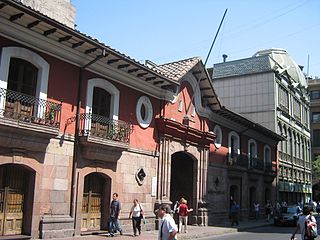 W
WCasa Colorada is a colonial house built located in Santiago, Chile. It was built in 1769, by Joseph de la Vega for Mateo de Toro y Zambrano, and currently houses the Museo de Santiago. The house has a clay-tiled roof, balconied windows, and deep-red walls, and consists of two storeys.
 W
WCasa das Rosas — Espaço Haroldo de Campos de Poesia e Literatura, is a museum and cultural center in the Paraíso neighborhood of São Paulo, Brazil.
 W
WThe Casa Stefan Zweig is legally regarded as a private charitable organisation, which was founded in 2006 by a group of interested private donors, to establish a writer's house museum, that is dedicated to the author, in the last residence of Stefan Zweig and his wife in Petrópolis (Brazil).
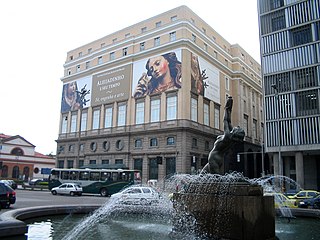 W
WThe Centro Cultural Banco do Brasil is a cultural organization of the Banco do Brasil based in Brazil with centers in Rio de Janeiro, Brasília, São Paulo and Belo Horizonte.
 W
WThe Children's Museum of Bogotá was a privately managed museum foundation in Bogotá, Colombia's capital city, established in 1986 and aimed at teaching children about science, technology, culture and arts. The foundation operated the Children's Museum in an 8,000 m² (86,000 ft.²) building in the geographical centre of Bogotá, in which over 23 different modules and hundreds of individual exhibits were housed. The museum served approximately 150,000 visitors per year — 69% of them children under 11 years of age that come to "learn by playing" in the exhibits.
 W
WThe Coca Museum covers the history of the coca plant from the Andean region and related drug cocaine. It is associated with the International Coca Research Institute (ICORI) in La Paz, the government seat in Bolivia. A travelling version of the museum is available.
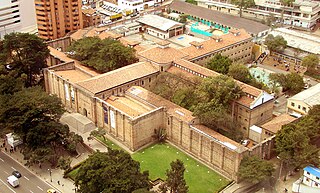 W
WThe National Museum of Colombia is the National Museum of Colombia housing collections on its history, art, culture. Located in Bogotá downtown, is the biggest and oldest museum in Colombia. The National Museum of Colombia is a dependency of the Colombian Ministry of Culture.
 W
WThe Museum of Contemporary Art, University of São Paulo is a contemporary art museum located in the main campus of the University of São Paulo, in São Paulo, Brazil, and in Ibirapuera Park, in the same city. It is one of the largest art museums in the country.
 W
WThis is a list of directors of the National Museum of Brazil. The Nacional Museum is one of Brazil's scientific institutions.
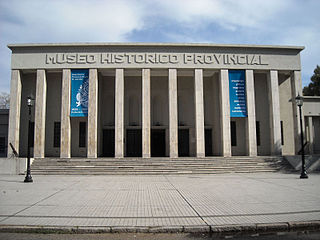 W
WThe Dr. Julio Marc Provincial Historical Museum is a museum in Rosario, Argentina. It comprises more than 30 rooms hosting collections of archaeological items, Spanish-American art, numismatics, pre-Columbian textile and silverwork crafts, and weapons, complemented by archives, a library, and collections of historical newspapers and maps.
 W
WThe Earth Sciences Museum is a geological museum in Rio de Janeiro, Brazil. The building was part of the National Exposition of Brazil in 1908. Its collection includes minerals, fossils, and geological exhibits. The building was constructed in 1907 for the National Exposition of Brazil and was intended to be permanent. At the exposition it was the States Pavilion.
 W
WMuseo de la Exploración Rudolph Amandus Philippi is a museum in Valdivia run by Universidad Austral de Chile. The exhibitions at the museum deals with the exploration of southern Chile, specially those made by the German naturalist Rudolph Amandus Philippi.
 W
WThe Father Sebastian Englert Anthropological Museum is a museum in the town of Hanga Roa on Rapa Nui in Chilean Polynesia. Named for the Bavarian missionary, Fr. Sebastian Englert, OFM Cap., the museum was founded in 1973 and is dedicated to the conservation of the Rapa Nui cultural patrimony. The museum is administered by the Chilean Directorate of Libraries, Archives and Museums (DiBAM) and houses the William Mulloy Library.
 W
WGuayaquil Municipal Museum is a museum in Guayaquil, Ecuador. It contains artifacts, objects and historical items relating to the history of Guayaquil. It is considered the most important of the city and one of the best in the country. It is located in the center of the city of Guayaquil, in the same building as the Municipal Library. Admission is free, but passports are required.
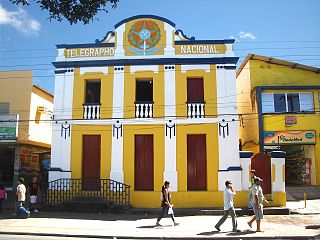 W
WHistorical and Geographic Museum of Campina Grande is a Brazilian museum, and is located in the Floriano Peixoto Avenue, in Campina Grande, Paraíba.
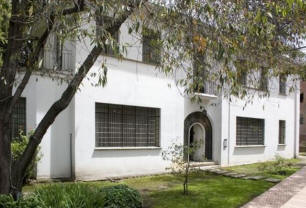 W
WThe Jorge Eliecer Gaitan Museum is a museum in Bogota, Colombia, dedicated to the life of assassinated politician Jorge Eliecer Gaitan.
 W
WJuan Manuel Blanes Municipal Museum of the Arts is the name of a municipal museum in Prado, Montevideo, Uruguay.
 W
WJúlio de Castilhos Museum is a museum located in the city of Porto Alegre. It is the oldest museum in Rio Grande do Sul state.
 W
WMuseu Lasar Segall is an art museum in São Paulo, Brazil.
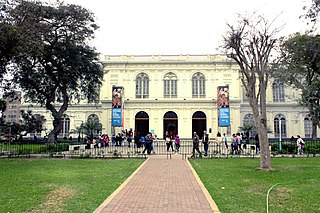 W
WThe Lima Art Museum is an art museum in Lima, Peru. The museum is located in the Palacio de la Exposición. The museum was inaugurated in 1961. The collection includes ceramics and textiles. MALI is a private organization supported by admission fees, contributions from members, and private donations.
 W
WLuis Adolfo Noboa Naranjo Museum is a museum in Guayaquil, Ecuador. It was established on January 25, 2006 by Alvaro Noboa. It displays the private collection of paintings of the late Ecuadorian entrepreneur, Luis Noboa Naranjo, representing a sample of the most important contemporary Ecuadorian painters, with whom he had cultivated friendship. The museum consists of 10 halls with 97 pieces of art, with a particular focus on avante garde, including three murals of Manuel Rendon, and the paintings of Oswaldo Guayasamín, Eduardo Kingman, Humberto Moré, Carlos Catasse, Ricardo Montesinos, Segundo Espinel, Luis Miranda, Oswaldo Viteri and others. The museum offers guided programs for schools and colleges through city tours, permanent public displays, temporary exhibitions, and painting competitions.
 W
WThe Maloka Museum is an interactive science museum located in Bogotá, Colombia. Visitors interact with a wide variety of exhibits that explore topics in Science and Technology.
 W
WMartínez-Holguín House is a historic house museum in Atocha parish, in the northern suburbs of Ambato, Ambato Canton, Tungurahua Province, Ecuador. It is situated in the Botanical Garden Atocha-La Liria, and dates to 1865, when it was built by Dr. Nicolás Martínez Vasconez. Since then, it has been the residence of several notable figures, including Luis A. Martínez, the author of the novel A la Costa and Minister of State and Education, who established the Colegio Normal de Agricultura in Ambato, and scientist Augusto Nicolás Martínez. It has since been converted into a wax museum.
 W
WMetropolitan Cultural Center is a cultural institution based in Quito, Ecuador. It was established in 1997 in a building which dates to 1622.
 W
WThe Museum of the City is a museum in Rosario, Argentina. It is located at 2300 Oroño Boulevard on a corner of the Parque de la Independencia, and is administered by the municipal government of Rosario. It was created on 24 August 1981 during the administration of mayor Alberto Natale.
 W
WMuseo Arqueologico de Santiago is an archaeology museum located in the Plaza Mulato Gil de Castro area of Santiago, Chile. The museum features cultural objects such as clothing, hats, jewellery and baskets from Chile, dating as far back as 1000 BC.
 W
WThe Museo Casa de Rogelio Yrurtia was the home of the sculptor Rogelio Yrurtia and is located in the Belgrano district of Buenos Aires.
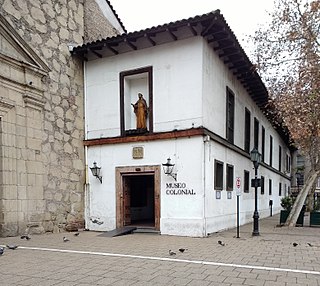 W
WMuseo Colonial is a historical, cultural and religious museum located in Santiago, Chile. The museum explores the colonial period of Chile and South America, with a collection of paintings, sculpture, furniture and other objects. Many of the pieces are religious, and were created in Peru, the former colonial capital. The museum also features a genealogical tree of the Franciscan Order which is "gigantic" in size and includes 644 miniature portraits.
 W
WThe Museo de Arte Acarigua-Araure (MAAA) is a not-for-profit art institution in Acarigua, Venezuela. MAAA exhibits local and international contemporary art. The museum was founded in 1987 by Ali Cordero Casal to promote contemporary art, culture and education through exhibitions and public programs. Since its inception, MAAA has organized over 40 exhibitions of both local and international artists. Education is an important facet of MAAA's mission and the museum maintains close relationships with schools in the region through workshops and educational activities.
 W
WMuseo de la Casa de Luis Alberto de Herrera (translation: House Museum of Luis Alberto de Herrera) is a museum in the Brazo Oriental barrio of Montevideo, Uruguay. The street in which the house is situated, somewhat set back from the road, is now known as Avenida Dr. Luis Alberto de Herrera. It is surrounded by a park designed by landscape architect Charles Racine.
 W
WThe Museo de UTE is a museum located in Barrio Centro in Montevideo, Uruguay. Specialized in the history, science and technology of Uruguay, the museum is directly dependent on the UTE. It exposes diverse elements linked to the history of the Uruguayan company. To visit the museum, one must coordinate a guided tour from Monday to Friday from 9AM to 5PM. This is one of the museums that adheres to the day of the Uruguayan heritage. The museum has the peculiarity of being located in an old house. The collection shows part of the country's electrical history and the preservation of old parts, tools and an incandescent lamp from 1879.
 W
WThe Museo Nacional de Arqueología Antropología e Historia del Perú is the largest and oldest museum in Peru, located on Plaza Bolívar in the Pueblo Libre district of Lima. The museum houses more than 100,000 artifacts spanning the entire history of human occupation in what is now Peru. Highlights include the Raimondi Stele and the Tello Obelisk from Chavín de Huantar, and an impressive scale model of the Incan citadel, Machu Picchu.
 W
WThe Rocsen Museum is a museum located in Nono, Córdoba Province, Argentina, 8 km from Mina Clavero. It was established in 1969 and features a "multifaceted" collection of over 18,000 pieces, with natural history, archaeological and decorative objects from all around the world.
 W
WThe Museo Torres García is located in the historic Ciudad Vieja of Montevideo where unusual portraits of historical icons and cubist paintings akin to Picasso's paintings, painted by Joaquín Torres García are exhibited. The museum was established by Manolita Piña Torres, the widow of Torres Garcia after his death in 1949 who also set up the García Torres Foundation, a private non-profit organization which organizes the paintings, drawings, original writings, archives, objects and furniture designed by the painter as well as the photographs, magazines and publications related to him.
 W
WThe Museu de Arte de Ribeirão Preto "Pedro Manuel-Gismondi" is an art museum in the city of Ribeirão Preto in the state of São Paulo, Brazil. Opened in 1992, with the aim of bringing together the art collection belonging to the city, the museum is a local public institution, subordinated to the Municipal Secretary of Culture. Since its founding, the museum is housed in the former Recreation Society building, opened in 1908, who has also served as headquarters to the City of Ribeirão Preto.
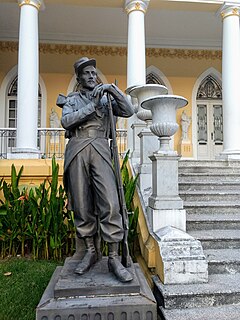 W
WThe Museu do Estado de Pernambuco (MEPE) is housed in a 19th-century mansion on the Av. Rui Barbosa in Recife, capital of Pernambuco state, Brazil. It was opened in 1929.
 W
WThe Museum Daniel Cargnin is located at Rua do Comércio, 825 in the city of Mata, Rio Grande do Sul, Brazil. It received its name in honor of priest and paleontologist Daniel Cargnin, which collected more than 80 percent of fossils in the region of Mata.
 W
WThe Museo de la Nación is one of two major museums of Peruvian history in Lima, Peru. It is much larger than the other main museum in Lima, the Peruvian National Museum of Archaeology, Anthropology, and History. Currently it is no longer being used as a museum, carrying only very esporadical exhibitions.
 W
WThe Museum of Tomorrow is a science museum in the city of Rio de Janeiro, Brazil. It was designed by Spanish neofuturistic architect Santiago Calatrava, and built next to the waterfront at Pier Maua. Its construction was supported by the Roberto Marinho Foundation and cost approximately 230 million reais. The building was opened on December 17, 2015, with President Dilma Rousseff in attendance.
 W
WNational Museum of Visual Arts (Uruguay) a museum in Parque Rodó, Montevideo, Uruguay. It was inaugurated on December 10, 1911.
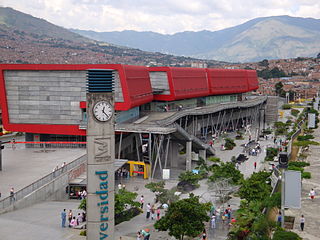 W
WParque Explora is an interactive science museum in Medellín, Colombia, loosely modeled after San Francisco's Exploratorium. It houses South America's largest freshwater aquarium, Explora Aquarium. The museum contains over 300 interactive attractions, as well as a 3D auditorium, planetarium, television studio, and vivarium. The museum opened in 2008.
 W
WThe Pinacoteca do Estado de São Paulo is one of the most important art museums in Brazil.
 W
WLa Quinta de San Pedro Alejandrino is an hacienda or quinta built in the 17th century, famous for being the death place of Simón Bolívar on December 17, 1830. The hacienda is located in the corregimiento of Mamatoco within the tourist district of Santa Marta, near the Caribbean sea in northern Colombia.
 W
WThe Royal Tombs of Sipán Museum is a museum in Lambayeque, Peru. It contains most of the important artifacts found at Huaca Rajada by archeologist Walter Alva in 1987, including the Lord of Sipán and his entourage. The museum was inaugurated in 2002. The museum was designed to resemble the ancient Moche tombs.
 W
WThe São Paulo Museum of Image and Sound is a public museum of audio-visual works, established in 1970 and located in São Paulo, Brazil. The museum was founded as a result of a project conducted in the 1960s by Brazilian intellectuals, such as Ricardo Cravo Albin, Paulo Emílio Salles Gomes and Rudá de Andrade, with the purpose of endowing the country with institutions devoted to studying and documenting works of the new media that had been ignored by traditional museums.
 W
WThe São Paulo Museum of Modern Art,, is located in Ibirapuera Park, São Paulo.
 W
WSchmitt-Presser Museum is a historical museum in the Hamburgo Velho district of Novo Hamburgo, Brazil. It was originally constructed as a mansion in the first half of the nineteenth century by Johann Peter Schmitt, a German immigrant. It is one of the oldest examples of German architecture in Rio Grande do Sul state. In 1974, the artist Ernesto Frederico Scheffel decided to take the first step of preserving the house and in 1981, was declared a public utility by the city and listed by IPHAN, four years later. In 1992, the building was opened to the public as House Community Museum Schmitt-Presser.
 W
WThe Sicán National Museum is a museum in Ferreñafe, Peru, which opened in 2004.
 W
WSucre House is a museum in the historic center of Quito, Ecuador. It was established in 1977 by the Ministry of Defence. It is dedicated to the memory of its most famous occupants: the Venezuelan independence hero, Marshal Antonio José de Sucre, and his wife, Mariana Carcelén.
 W
WThe Wine Museum and Enoteca is a Brazilian museum and enoteca, located in Porto Alegre in the old building of the plant's gas tank. The museum carries approximately 250 varieties of wines produced by 32 wineries in Rio Grande do Sul, with descriptive guidance products. The Enoteca is the only wine museum in Brazil, with international standards comparable to the French, and the second in Latin America in the public domain. The collection of the museum also keeps parts and equipment used in the initial period of industrialization of wine.